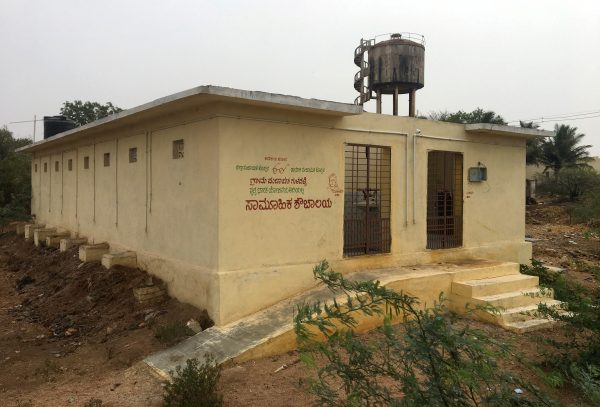Its aim was to construct toilets to end open defecation and meet Sustainable Development Goal 6.2. The program’s technical approach to solving a social problem — couched in the language of vikas (development) — camouflages social justice concerns about equitable toilet access.
Three years since the alleged success of the sanitation intervention, the ruling Bharatiya Janata Party (BJP) repeatedly labels the campaign a ‘success’. The party now mentions open defecation in the past tense and has moved on to other priorities in the water, sanitation and health sector.
But the BJP conveniently ignores hard data when making its claims. In May 2022, the Institute for Population and Health Research released the fifth version of its National Family and Health Survey (NFHS-5). The NFHS data provides demographic information on population, health and nutrition that estimate the results of the federal government’s welfare programs and guides policymaking.
The survey suggests that open defecation is still practised by one in five households. According to the NFHS-5, 19.4 per cent of the country does not have access to a toilet — of which 25.9 per cent is in the rural areas and 6.1 per cent in the urban areas. In comparison to the NFHS-4, these numbers have declined from 54.1 per cent and 10.5 per cent, respectively.
While this is a healthy indicator for a country in which more than 600 million people practised open defecation over the previous decade, the nation is nowhere close to obtaining ODF status. The real number for open defecation is likely higher than the NFHS data, as the survey assumes that the response of one household member represents the sanitation practices of the entire household. A gender-wise break-up of sanitary habits and data on homeless people is also missing.
For a country where defecating in the open is an accepted norm in rural areas, the government deserves credit for shaping public imagination in favour of Swachh Bharat. But the exclusion of caste — the rigid social stratification of Indian society — and other socio-economic determinants in the policy design explains the divergence between the NFHS data and the government’s ODF claim.
There are two points that highlight how the mission’s singular focus on toilets construction could perpetuate class and caste inequities in villages.
First, the haste in getting ODF status diverts resources from other areas and disproportionately impacts marginalised communities. The Modi administration galvanised the bureaucracy to supervise the construction of toilets — even directing non-health officials to join the taskforce. Government officials were often rushed to make unverified ODF declarations about their districts.
But villagers have an equally important role here because the onus was on them to construct the latrines. The federal government asked villagers to construct the toilets out of their own pockets, after which they would receive government subsidies.
Research found that officials and upper-caste Hindus used coercive tactics on the lower caste (Dalits) — including withholding government benefits and threats of fines — to get the ODF tag for their village. Since the messaging of the intervention was rooted in ‘the development narrative’, those who failed to build latrines in their homes were berated for not contributing to their village’s development.
The rural poor often used their savings for latrine construction and were only eligible for reimbursement if the whole ward in the village had constructed latrines. Dalits face the added burden of withheld benefits and fines, a form of caste-based discrimination that explains why 28.8 per cent of Dalits in rural areas still don’t have a toilet in NFHS-5 data.
Another challenge is access to waste treatment facilities. In the absence of water and centralised sewage, pit latrines and septic tanks require manual scavenging to remove excreta. According to NFHS-5 data, of the 74.1 per cent with toilet access, only 2.9 per cent have a piped sewer connection in rural areas. Similarly, in urban area only 10.4 per cent have a sewer system.
The burden of Swachh Bharat falls on the lower castes, who are coerced into constructing the latrines using their savings and shamed by officials and upper castes for not participating in the country’s ‘progress’. But without proper waste treatment infrastructure, they are forced again to engage in manual scavenging — putting their dignity and health at risk.
Unless caste and other socio-economic determinants of toilet access are included in India’s policy design and implementation, open defecation will continue, further marginalising the lower castes.
Younus Mushtaq Ahmed is a PhD student in Medical Anthropology at the University of British Columbia and is a Fellow at the Institute of Asian Research, School of Public Policy and Global Affairs.


This is such a poorly argued article. Caste has no bearing on access to toilets, or the construction of sanitation facilities (both of which are non-caste issues).